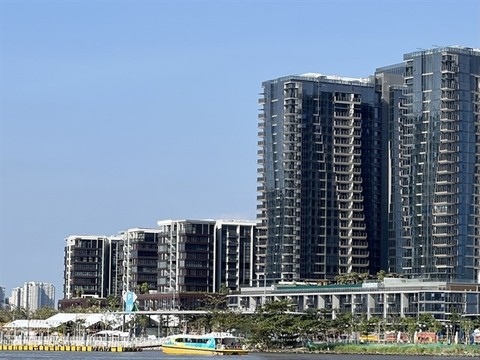|
HCM City, Hanoi among Savills list of fastest-developing cities
HCM City and Hà Nội have been included in the Savills list of fastest-developing cities on the planet recently released by the commercial real estate brokerage firm.

HCM City ranks second in the Savills list of fastest-developing cities on the planet recently released by the commercial real estate brokerage firm. — Photo courtesy of stockbiz.vn
|
The southern metropolis ranks second, while the capital city, sixth, in the Growth Hubs Index, a companion to the Savills Resilient Cities Index.
According to Savills, the Growth Hubs Index builds on the Resilient Cities Index by forecasting the economic aspects of 230 cities through to 2033 to identify the fastest-growing cities.
Cities in India and Bangladesh, which are expected to see GDP growth of more than 68% over the decade, feature heavily. Bengaluru in India leads the Growth Cities pack, followed by HCM City.
Data is city-metro level from Oxford Economics. Future credit rating is at a country level. Only cities with a GDP in 2023 of US$50 billion or above are included in the analysis.
The firm said HCM City’s strong forecast is driven by the largest increase in the number of high-income households, while Hanoi’s prospects are based on growing personal wealth and an expanding middle class.
Vietnam continues to lay the groundwork to reap the benefits of strong inflows of foreign direct investment in the coming decade through step-changes in infrastructure, regulation and planning.
About 6% of GDP is committed to infrastructure – the highest level in the region. This is for projects including Long Thanh International Airport, east of Ho Chi Minh City, as well as thousands of kilometres of new roads and deep sea ports.
“Vietnam has changed from traditional dirt-floor manufacturing, with companies just seeking a lower cost of labour, to a country that is high-tech, more intensive, with tertiary manufacturing,” says Troy Griffiths, Deputy Managing Director, Central Management at Savills Vietnam.
This means the production of solar panels, electric vehicles, chips, laptop batteries, phones, monitors and all the relevant downstream components. Vietnam relies on a couple of key relationships, however: Samsung represents a remarkable 10-30% of the country’s GDP, while LG Corp also has a strong presence.
HCM City has always been the gateway for foreign investment. At 92% occupancy, it has a strong office market with a shortage of Grade A stock. Retail is thriving too, with robust domestic demand driving modernisation of the city’s traditional shophouses.
Hanoi has also won a large share of high tech manufacturing opportunities recently, but its downfall is its air quality. Situated in a delta bordered by two mountain ranges, any pollution becomes trapped; the city recently topped a list of the most polluted cities in the world. However, improving infrastructure has facilitated the development of localities with clean and natural environments within an hour’s travel, offsetting the city’s pollution issues.
Overall, investment in infrastructure is expected to shift the country’s industrial landscape. Around these new projects, land will also be earmarked for residential developments, plus supporting services and amenities.
Bizhub
|